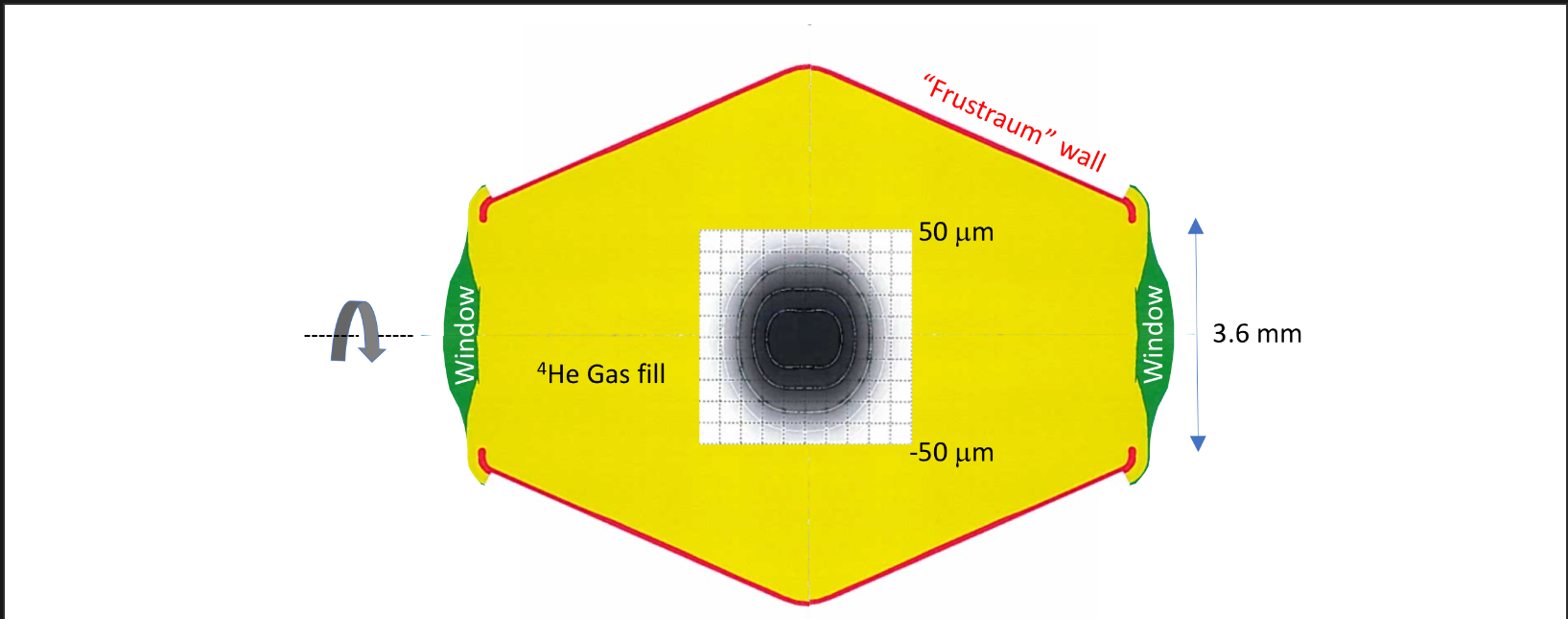Peter Amendt (17-ERD-119)
Executive Summary
We are investigating promising laser-target capsule designs optimized for symmetric implosions with higher absorbed energy than those currently used at Livermore's National Ignition Facility, to achieve burning plasma conditions. This research benefits DOE/NNSA goals in nuclear and energy security.
Project Description
The process of indirectly driven laser fusion uses a high-atomic-number radiation cavity (i.e., a hohlraum) to efficiently convert laser energy to x-ray energy. The hohlraum must provide the necessary radiation drive for compression while doing so in an adequately symmetric fashion. Suspended in the middle of the hohlraum is a capsule of isotopic hydrogen (deuterium and tritium) encased in an ablator shell. Radiation generated by the hohlraum bathes the capsule, ablating material from its outer surface and causing the capsule to implode simply from momentum conservation. Compression of the capsule with soft x-ray radiation forms a central “hot spot” where fusion reactions commence. The larger the capsule, the more energy it can absorb and the easier it becomes to achieve ignition. The size of capsule that can be fielded in a hohlraum at Lawrence Livermore’s National Ignition Facility is constrained by the physics within the hohlraum and the available laser power and energy. We are developing high-risk, high-payoff hohlraum target capsule designs that aim to establish a credible prospect of capsule absorbed energies approaching 500 kJ for added hot-spot ignition performance margin. We will focus on small hohlraum case-to-capsule ratios (or “close-coupling”) designs that deliver satisfactory drive symmetry with optimized laser-entrance-hole dynamics. Successful designs with critical experimental validation on the OMEGA laser facility in Rochester, New York, will be integrated into novel close-coupling designs such as “forward radiators” driven at 3-omega (ultraviolet light). We also plan a supporting modeling effort on assessing laser–plasma interactions and hot-electron transport for the various designs.
We expect to deliver a suite of promising holhraum designs optimized for achieving a symmetric implosion with use of the National Ignition Facility's full laser power and energy, and for providing sufficient absorbed capsule energy to access burning plasma conditions. We intend to establish the viability of a laser target capsule with twofold- to threefold-higher absorbed energy compared with the maximum inferred 180 kJ for conventional case-to-capsule ratios in the National Ignition Facility cylindrical hohlraums. A first step toward this design goal is optimized laser-entrance-hole dynamics to maintain late-time symmetry control with minimal drive losses. Key elements of the design work will focus on maintaining laser-entrance-hole integrity at late time via advanced foams and microfibers to provide beneficial back pressure to the ablating material. A supporting experimental campaign at the OMEGA laser facility will guide the choice of optimized entrance-hole design for application to next-generation hohlraums with a low case-to-capsule ratio and high capsule absorbed energy. Critical components of these hohlraums will be tested in modular form at OMEGA. We also intend to pursue a parallel design effort for achieving high capsule absorbed energy with 2-omega (visible green light) at the National Ignition Facility.
Mission Relevance
This research supports the Laboratory’s core competency in high-energy-density science through an enhanced understanding of high-energy-density physics and improved prospects for demonstrating thermonuclear ignition on Livermore’s National Ignition Facility. This work is also relevant to DOE/NNSA goals in both nuclear and energy security.
FY17 Accomplishments and Results
In FY17 we (1) began to assess strategies for maintaining an open laser entrance-hole for as long as possible; (2) investigated possible techniques, including the use of (i) a low-atomic-number microfiber on the hohlraum symmetry axis, (ii) a low-density nanometer-scale porous foam insert at the laser entrance hole, (iii) thicker windows, (iv) a low-atomic-number liner on the lip of the entrance hole, and (v) low-density high-atomic-number foams on the hohlraum endcaps; (3) determined that the presence of a window at the laser entrance hole is found to shunt the radial expansion of a microfiber and assessed its impact on holding the hole open from ram pressure; and (4) initiated techniques to accommodate the presence of a window while maintaining improved laser entrance-hole performance.
   






